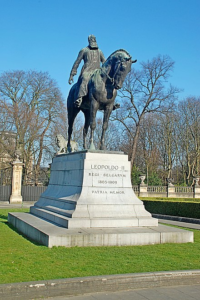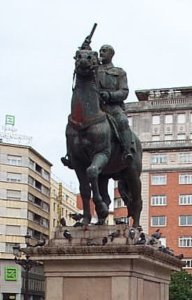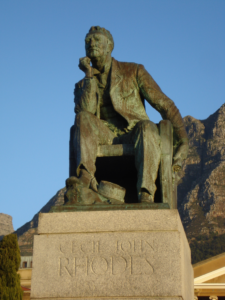By Miles Ezeilo
Public statues are often created around the world to memorialize major historical persons, events, and ideas. The work of World Heritage USA and the Monuments Toolkit aims to shed light on these amazing pieces of culture found all around us. Not all monuments, however, are widely recognized, and some have provoked debates and controversy since their creation. In this blog post, World Heritage USA will look at three controversial monuments around the world that have caused major debate.

Equestrian Statue of Leopold II, Brussels, Belgium
The Equestrian Statue of Leopold II, located in the heart of Brussels, was one of Europe’s most contentious monuments. During his reign as the King of Belgium, Leopold II was infamous for his brutality over the Congo Free State from 1885-1908. An estimated ten to fifteen million Congolese died as a result of forced labor, sickness, and other horrors. The statue erected to honor him was made in 1926, standing tall over the city of Brussels for almost 100 years.
Despite this heinous legacy, some parts of Belgium still revere Leopold II, and the statue in Brussels had been the site of numerous demonstrations and vandalism. While some citizens believe that they should add a plaque to highlight the crimes committed during Leopold II’s reign, instead, they removed the monument in 2020.

Equestrian Statue of Francisco Franco, Madrid, Spain
The Equestrian Statue of Francisco Franco in Madrid, Spain, served as a reminder of the country’s period of facism. Franco ruled Spain from 1939 until his death in 1975. Historians characterize his authoritarian reign by political persecution and a plethora of human rights violations. Many Spaniards remember Francisco Franco as a polarizing character who wreaked havoc on their country. His statue, created in 1956 and presented to the public on 18 July 1959, was a subject of major contention until its removal in 2005.
Despite this, some conservative groups continue to embrace the fallen statue and other Franco-era icons, claiming that they are an important part of Spanish history.

Cecil Rhodes Statue, Cape Town, South Africa
Finally, another contentious monument that has seen its share of public scrutiny is the Cecil Rhodes statue, located in Cape Town, South Africa until its removal in 2015. Rhodes was a British imperialist who was instrumental in the conquest of Southern African countries in the late nineteenth century. South Africans almost equally remember him for his racist and imperialist beliefs, which many consider to be out of place in modern South Africa.
In 2015, a student-led movement demanded the removal of the statue, claiming it was a symbol of white supremacy and a reminder of the country’s colonial past. The University of Cape Town finally removed the statue from the campus, igniting a national debate in South Africa regarding the role of colonial-era monuments.
Monuments have the ability to change our conceptions of history and the people who have shaped it. However, contentious sculptures can serve as a reminder of traumatic histories and the ongoing struggle for social justice. These three monuments, all of which were located outside of the United States, have stirred major debate and controversy in all corners of the world, underlining the importance of continuing to discuss how we remember and memorialize historical personalities and events.

